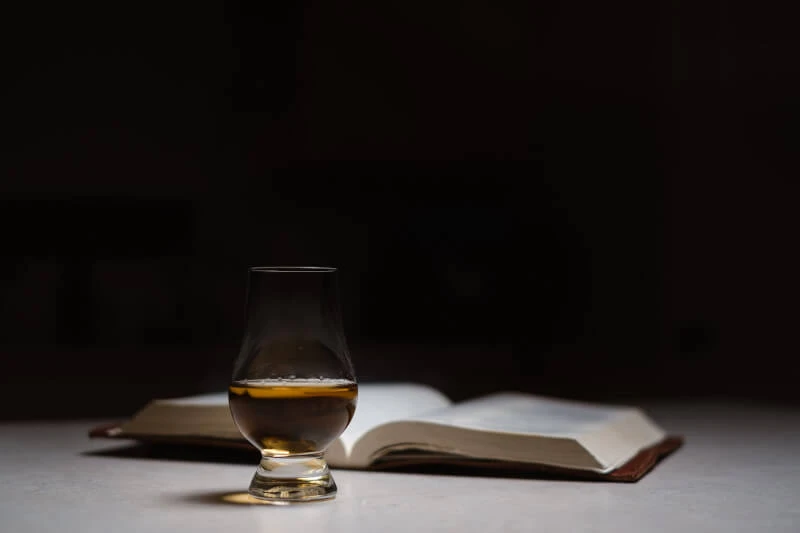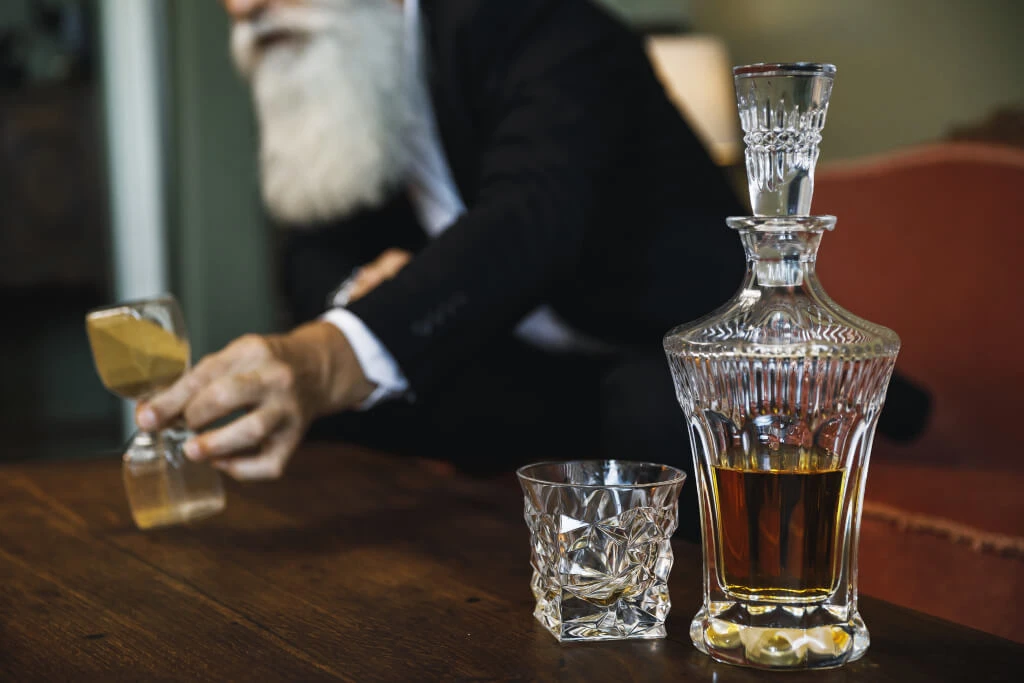A spirit as storied as it is delicious, full of nuance and complexity to delight both the uninitiated and the well-versed palate.
What is Whisky?
Whisky is a drink that requires careful balancing of ingredients and skillful production. The most frequent grain used to make whisky is malted barley, but rye, wheat, and even maize can be included in the final product. These grains make up the mash bill,’ and the ratio between them determines the final flavor of the resulting liquid.
This is just the beginning of the metamorphosis. Whisky is often aged in wood casks, where time plays the role of master distiller, transforming the spirit into a complex orchestra of flavors. The longer it ages, the softer and deeper the flavors get.
Whisky, however, defies easy categorization. Scotch whisky (of which there are four main types), Irish whisky, Japanese whisky, Canadian whisky, and their American kin, Bourbon and Rye, are just a few examples. This cosmos is so big that it seems like there are infinite possibilities, each of which promises an exciting adventure.
Where Do We Source Our whisky?
Whisky’s history may be traced back to the 15th century. Although whisky was originally mentioned in Irish literature, archaeological evidence reveals that it was initially distilled in Scotland. Whisky’s early history can be glimpsed in records like the 1494 Scottish Exchequer Rolls and the 1618 funeral account of a Highland laird.
The word “whisky” is a lyrical homage to the Gaelic phrase “uisge beatha,” which means “water of life.” Although it had humble beginnings as a medicine, by the 19th century, this beverage had worked its way into the hearts and cups of the affluent.
What Are Some Common Customs Associated With Whisky?
The complex history of whisky has spawned a wide variety of customs that go beyond conventional rituals. This is a matter of personal experience.
Consider the Glencairn whisky glass. It’s not simply pretty to look at; it serves to enhance the flavor of whisky. The “proper” whisky glass has a broad bowl, narrowing sides, and a narrow mouthpiece that allows the aroma to reach the nose immediately.
Then there’s the age-old custom of diluting whisky with water. Instead of water diluting the spirit, only a few drops can bring out the spirit’s full range of flavors, making it easier to enjoy.
And nobody forgets about Burns’ Night. In honor of the Scottish poet Robert Burns, whisky, tradition, poetry, and haggis are all enjoyed together on January 25. ‘John Barleycorn,’ Burns’ ode to whisky, is a celebration of the comfort and joy that alcohol offers.

Whisky cocktails open up a world of possibilities for individuals with an adventurous spirit. There is a cocktail for every palate, from the time-honored Whisky Sour to the novel Rusty Nail.
Whiskey’s appeal extends beyond the palate. Whisky ‘nosing,’ which entails swirling the liquid and inhaling its smells, is part of a sensory experience meant to highlight the drink’s many nuances. Whisky, as Haruki Murakami astutely observed, is something to be admired before being consumed.
The traditions we’ve explored so far merely skim the surface. Around the globe, different cultures have embraced whisky and developed unique rituals and practices that celebrate this versatile spirit. Each tradition adds a special flavor, figuratively speaking, to the experience of enjoying whisky.
| Country | Tradition | Description |
|---|---|---|
| Japan | Mizuwari | Mixing whisky with water and ice, allows the flavors to mingle over time. |
| Germany | Starka Celebration | Aging whisky in bottles with a piece of fruit or sugar, often commemorating a birth, to be opened on a significant life event like a wedding. |
| India | Whisky with Water and Spice | Enjoy whisky with water and a splash of spices, reflecting the country’s rich culinary heritage. |
| Taiwan | Kavalan Tasting Ceremony | A tasting ceremony involving Taiwan’s famed Kavalan whisky, appreciating the flavor notes with specific food pairings. |
| Sweden | Snapsvisa | Singing traditional songs (snapsvisor) before sipping whisky, usually during celebrations. |
| Switzerland | Whisky and Chocolate Pairing | Pairing Swiss whisky with local chocolate, highlighting the complimentary flavors. |
| USA (Kentucky) | Bourbon Trail | Visiting distilleries along the Kentucky Bourbon Trail, making it not only a tasting experience but a cultural exploration of the state’s rich bourbon heritage. |
| Spain | Whisky La Fée | A popular cocktail in the Basque Country, mixing whisky with coffee, sugar, and a lemon twist, often enjoyed in social gatherings. |
Life-Sustaining Liquid
The whisky industry is both massive and fascinating. It’s a never-ending adventure for novices and experts alike to dig into its rich history, culture, and fragrances.
If you want to learn and discover more, you have to try more things. Join a group, look for a pal, or just sit back and enjoy your drink. Whisky is more than simply a beverage; it’s a way of life, a cultural touchstone, and a necessity for survival. Finally, keep in mind that W.C. Fields once said, “Always carry a flagon of whisky in case of snakebite, and always carry a small snake.”
Whisky, a simple combination of grains and time, has become far more than a beverage; it is a cultural symbol, a bridge that connects different traditions, histories, and flavors across the world. Each custom speaks not just of a drink, but of the very essence of the people who enjoy it.
It’s fascinating to see how whisky’s transformation transcends its primary role as an alcoholic beverage to become part of global cultural identities. Whisky functions as a universal language. Its flavors have the power to echo the topographical and climatic intricacies of the regions it hails from, and its traditions mirror the customs, relationships, and values of its people.
While the types and methods of whisky production vary widely, a common thread binds these diverse practices – a commitment to quality, an honoring of heritage, and an embracing of innovation. Distillers, no matter where they are located, approach the creation of whisky with a blend of reverence for the old ways and enthusiasm for new possibilities. They craft not just a drink but an experience, a living tradition that continues to evolve.
The complexity and richness of whisky’s global tapestry cannot be confined to a mere collection of bottles or a list of rules. It lives in the moment when friends raise a glass on Burns’ Night, in the quiet appreciation of a connoisseur nosing a rare blend, and in the lively clink of glasses in a celebratory toast. In the world of whisky, every drop is a reflection of humanity’s shared experiences and cherished rituals.

